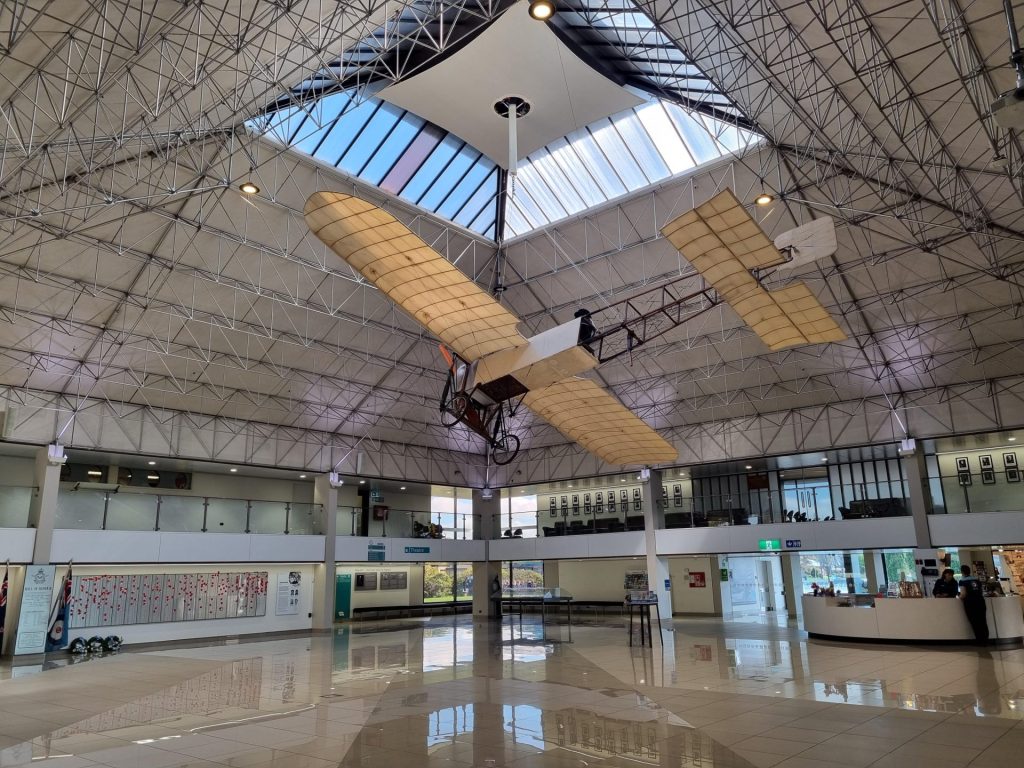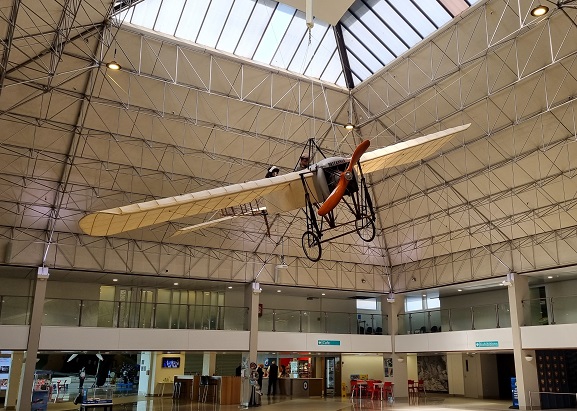Visitors to the Air Force Museum are now greeted by a new aircraft installation, soaring above their heads in the Atrium.
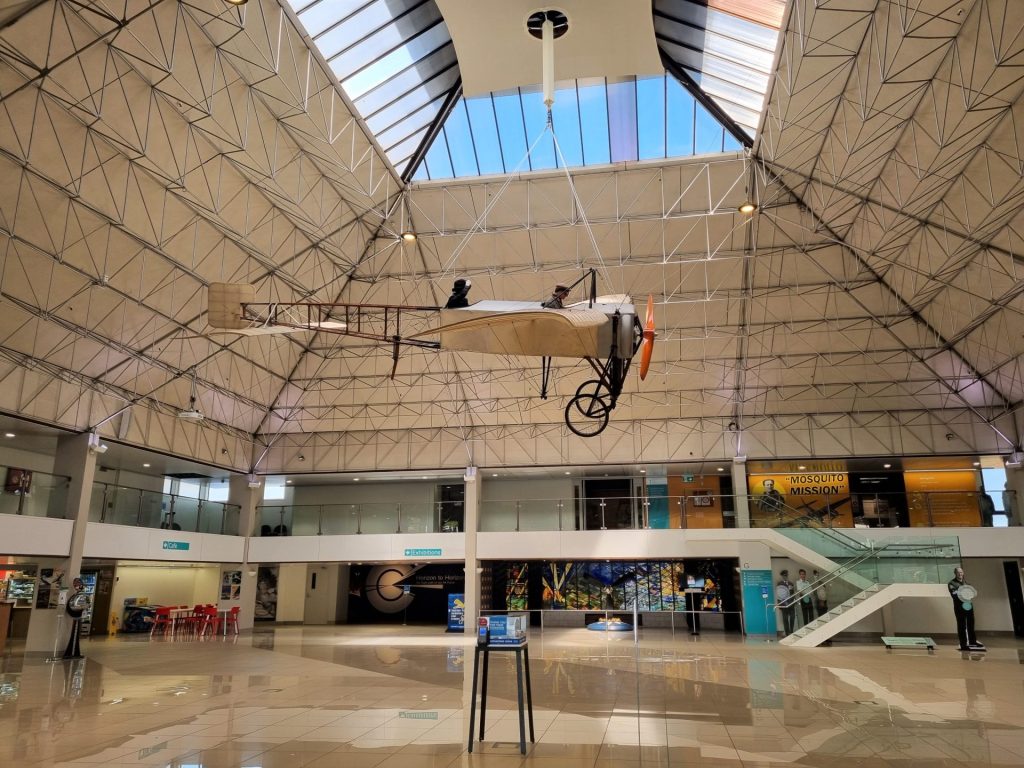
Many will remember the original trio of aircraft suspended in this space, specially chosen to represent different phases of New Zealand’s military aviation history. A Bleriot replica, Tiger Moth and Vampire jet hung for more than 30 years, with little intervention beyond routine cleaning; even surviving the earthquakes of 2011-2012, with only the Vampire suffering minor damage.
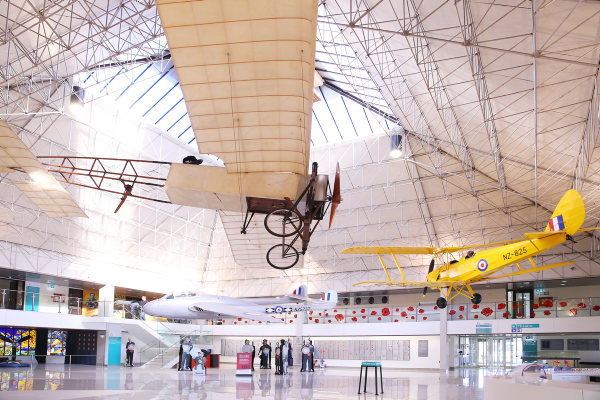
In 2019, however, it was decided that it was time to give these aircraft a long overdue detailed conservation inspection in the Museum’s workshops, so all three were lowered to ground level and moved out. This removal also gave the opportunity to review the engineering, content, and interpretation of the display in that area.
A structural review of the Atrium was undertaken by engineering consultants to determine the safest way to re-suspend aircraft or other large objects, taking into account issues such as seismic loading. Much of this work was severely delayed due to Covid-related interruptions, but eventually, the recommendation that one central suspension point should be established with a maximum load capability of 2 tonnes, was adopted.
Design and fabrication work commenced on the new attachment point, while an old section of false ceiling was removed. The new and improved attachment point sits much lower in the Atrium space, reducing the height to which any suspended object must be lifted for attachment. The installation also has an integrated electrically powered winch that can be used to lift the suspended item to the attachment point. This feature will make routine cleaning and inspection at ground level much easier, which is very important for the ongoing preservation of museum aircraft.
Several candidates were considered for the replacement. As with any activity undertaken by the Museum, the preservation and conservation of the collection is paramount. This meant that issues such as airframe structural integrity, the preservation of originality and the risks associated with suspending individual aircraft were all considered when deciding which aircraft to suspend.

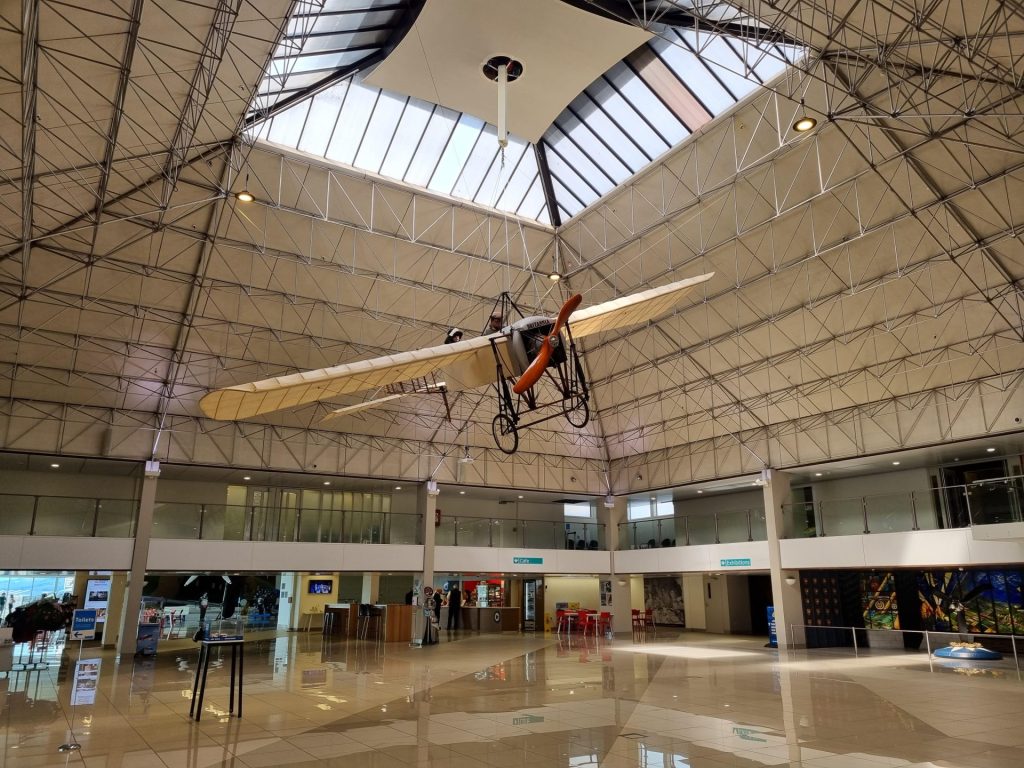

As any large object suspended in the Atrium is also the first thing that visitors see when entering the Museum, it seemed fitting that the replica of Bleriot XI-2 Britannia, the aircraft that represents the beginning of New Zealand’s military aviation story, should return to the space. That said, the new attachment point provides the Museum with options and the plan is to review and change what is suspended from time to time.
